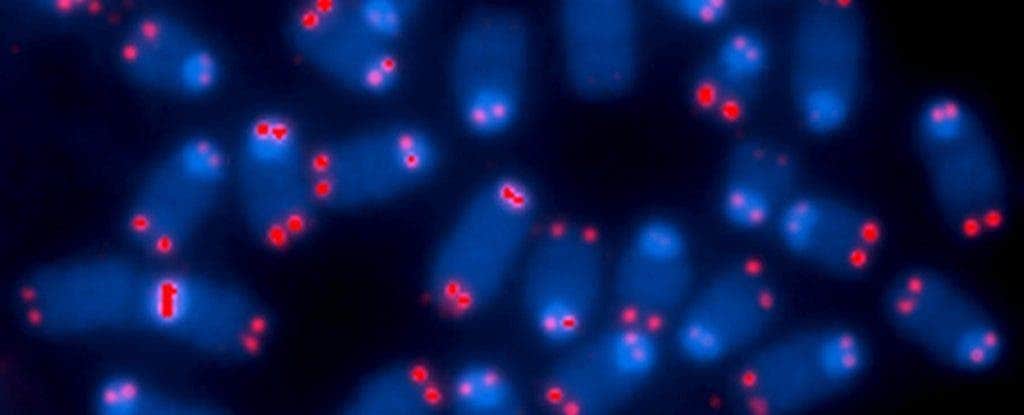Researchers have discovered they can use a male hormone to reverse cell ageing, offering hope for treating a host of conditions caused by cell degradation. Their clinical trial is the first time hormones have been proved to reverse the processes that naturally take place in human cells as they age.

US and Brazilian researchers have successfully used danazol, a synthetic male hormone, to stop cells from deteriorating with age. The hormone stimulates the production of telomerase, an enzyme which keeps cells “young” by stopping their genetic material from shrinking. It does this by keeping telomeres — the red caps you see in the picture at the end of chromosomes — intact.
“One of the processes associated with ageing is progressive shortening of telomeres, DNA-protecting structures at the ends of chromosomes, like the plastic tips on shoelaces,” explained one of the researchers, Rodrigo Calado from the University of São Paulo in Brazil.
“Each time a cell divides, its telomeres get shorter,” Calado added. “Eventually, the cell can’t replicate anymore and dies or becomes senescent [biologically aged]. However, telomerase can keep the length of telomeres intact, even after cell division.”
In the study, danazol was prescribed over two years for 27 patients suffering from aplastic anaemia (premature ageing of bone marrow stem cells), caused by telomerase gene mutations. Over this time, a person would typically lose 100 to 120 telomere base pairs per year, but someone with a telomerase deficiency could lose between 200 and 600 base pairs.
Telomerase is naturally produced in cells that constantly divide, such as blood-forming stem cells. Previous research has shown that it has a huge role to play in maintaining these cells in working order, and increasing levels of telomerase helps protect them from wearing out over time. On the other hand, a lack of this enzyme can cause organ damage and increases the risk of cancer.
Under the new treatment, the study participants’ cell telomere length not only stopped shrinking but increased by 386 base pairs on average. Hemoglobin mass rose too, which meant patients were no longer dependent on blood transfusions.
This study proves that prescription steroids can be used to increase telomerase production on demand. confirming the results previously seen in the lab in live humans. Based on these findings, new treatments for conditions such as aplastic anemia or pulmonary fibrosis (where the lungs become scarred) could be developed, the team said.
But they should be cautious in developing new treatments – sex hormones can come with notable side effects, including mood swings, tiredness, and digestive system problems.
The full paper, titled “Danazol Treatment for Telomere Diseases” have been published in the New England Journal of Medicine.






